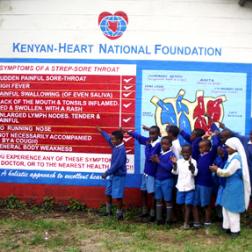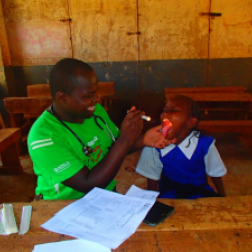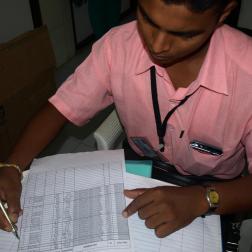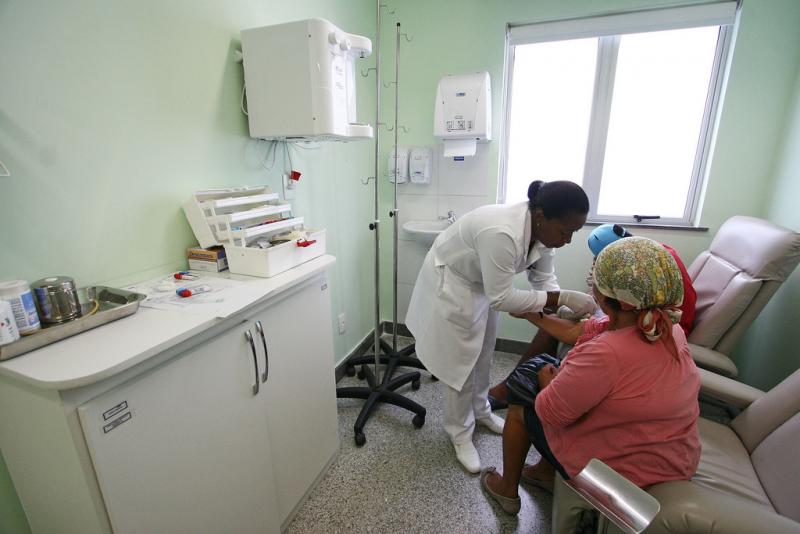Health systems and integration
RHD and health systems
Referral pathways
In most countries the health system is approximately arranged from primary care (small, local, general) to higher levels of care (larger, specialised, centralised). Referrals between primary, secondary, tertiary and quaternary health are a risky period for loss of clinical information or breakdown in continuity of care. The transition from primary to secondary and tertiary care can be overwhelming for patients who may need to travel to large cities, be assessed in unfamiliar languages and be separated from community support structures. Transport may be difficult or prohibitively expensive. Patients may be ‘lost’ during the referral process, particularly in settings without clearly established pathways for escalating care. These problems can be even more severe when patients are being referred or treated internationally for surgical care.
Diagonal integration
One of the ongoing debates in health care – particularly in low and middle income countries (LMIC) – is how to structure funding streams, care delivery and governance. Debate is often centered on ‘vertical’ programs (for specific diseases like HIV/AIDS, malaria and tuberculosis) versus horizontal programs (usually health systems strengthening interventions, like improved primary care and/or laboratory services). Evidence on the effectiveness of integration is mixed. In reality, a combination of horizontal and vertical programs is usually needed; sometimes called a ‘diagonal’ approach. Diagonal programs strengthen primary health care and infrastructure alongside disease specific activities. Control of RF/RHD is well suited to a diagonal approach. Horizontal health systems components may include improved access to primary care, treatment of sore throats, access to laboratory services, referral pathways and primordial prevention. Vertical components may include a register and dedicated staff to deliver secondary prophylaxis injections.
RHD and non-communicable disease
Non communicable diseases s are a global crisis, causing 68% of deaths worldwide in 2012. To address the epidemic of NCDs WHO member states adopted a Global Action Plan on the Prevention and Control of NCDs (GAP), which spans the years 2013-2020. This was coupled with an international commitment to reduce premature mortality from NCDs by 25% by 2025.
The GAP acknowledges RHD as a treatable non-communicable disease of childhood that should be addressed with health promotion, disease prevention and comprehensive care and includes secondary prevention of RHD in the basic package of options for achieving its target on therapy and counseling to prevent heart attacks and stroke. Additionally, the provision of benzathine penicillin G can fall under the GAP target on access to essential medications and therapy.
The NCD community has begun to embrace the needs of RF/RHD by identifying secondary prevention with BPG as a cost-saving intervention to reduce the global burden of NCDs. At a regional level this has fostered an increased focus on RHD, with recommendations that disease be included in NCD programs, administered by NCD departments and services delivered through primary care.
The Global Action Plan on Non-communicable Disease and the emergence of post-MDG global health agenda offer opportunities to examine RHD as an NCD of poverty and a sentinel of health inequality. In 2014 the World Heart Federation hosted a meeting alongside the World Health Assembly in Geneva on the theme of 'Addressing inequalities in NCDs: a focus on rheumatic heart disease’. The event assembled speakers from the World Health Organization and from countries tackling RHD: Fiji, Rwanda, Australia and New Zealand.
RHD and maternal child health
Women with RHD are at risk of heart failure and arrhythmias during pregnancy. In late pregnancy blood volume increases by 30 – 50% and heart rate rises. During and after delivery blood pressure and cardiac output increase in association with contractions. These changes require considerable cardiovascular elasticity.
In women with RHD this capacity may be limited by established heart failure or blood flow restricted by scarred rheumatic heart valves. Signs and symptoms of this cardiac deterioration are easily confused with late pregnancy: breathlessness, fatigue and swelling (oedema) and soft heart murmurs. Undiagnosed, cardiovascular collapse can lead to maternal death.

The World Health Organization completed a systematic review of 60,799 maternal deaths compiled from published reports in 2014. In developing countries, more than one in five maternal deaths were from indirect causes, most commonly exacerbation of pre-existing medical conditions. RHD is a significant cause of these indirect deaths.
Some women with RHD will become pregnant, others are diagnosed when they become symptomatic during pregnancy. Some women will be undiagnosed until they become acutely unwell during delivery.
Although all deliveries with maternal heart disease are high risk it may be possible to minimise this risk by:
- Diagnosing the RHD prior to delivery (and preferably prior to conception).
- Early antenatal care and planning for delivery.
- Delivery by in medical facilities equipped to manage high risk pregnancy.
- Access to contraception.
Strategies to improve integration with maternal and child care could include:
- Educating all women with RHD that all pregnancies/deliveries need close medical supervision, and providing tangible support for accessing medical care. Providing accurate and supportive education about RHD in pregnancy is very important; the social and cultural effects of having a condition which influences fertility may be significant.
- Developing a referral system for primary health workers and midwives to access echocardiography and specialist review for women with rheumatic heart disease.
- Include RF/RHD in routine antennal care, including medical history and cardiac auscultation.
- Provide education for midwives about symptoms of heart failure which can be easily confused with the symptoms of late pregnancy.
RHD and primary care
The ultimate goal of primary health care is better health for all. The World Health Organization identifies five key elements to achieving that goal:
- reducing exclusion and social disparities in health (universal coverage reforms);
- organizing health services around people's needs and expectations (service delivery reforms);
- integrating health into all sectors (public policy reforms);
- pursuing collaborative models of policy dialogue (leadership reforms); and
- increasing stakeholder participation.
The general principles of community based programs transcend disease specific issues and focus on the needs of individuals and their families. RF and RHD are ideally suited to a primary care approach; early signs (sore throat, joint pain) are often identified by primary care clinicians. Secondary prophylaxis and much ongoing care can be safely provided by primary care staff which reduces costs and improves accessibility. Providing the majority of care through supported primary care clinicians can benefit consumers and the broader health system. A number of specific control program components can be delivered in the primary care setting:
Delivery of primary prophylaxis
Evaluating and treating sore throats is an important part of primary care and should be a core competency for front line health staff in most settings. Enhancing access to primary care is important for making primary care practical and affordable.
Diagnosis of suspected RF
Primary care staff have a critical role in identifying suspected cases of ARF. Secondary prophylaxis can only be initiated for people who present for care and are receive the correct diagnosis of RF. Diagnosis relies on accurate use of the Jones Criteria. In endemic settings primary care staff need sufficient training to recognise possible cases, and refer for them definitive diagnosis.
Delivery of secondary prophylaxis
Although register based programs are helpful for ensuring consistency of BPG administration it may be possible to shift some secondary prophylaxis to primary care practitioners – particularly in rural or remote locations. Primary care systems may need adjustment to make this possible. For example, existing computer, triage or administrative systems can be adapted to include diagnostic codes and follow up recalls for ARRF and RHD.
Education and primordial prevention
Primary care staff are uniquely positioned to know local families, identify who is at risk for ARF and RHD, to provide education about overcrowding, advocate for families and provide targeted interventions where they are needed most. The important and time consuming role of primary care in prevention, advocacy and education should not be overlooked amidst the delivery of clinical services.
“Primary health care is essential health care based on practical, scientifically sound and socially acceptable methods and technology made universally accessible to individuals and families in the community through their full participation and at a cost that the community and country can afford to maintain at every stage of their development in the spirit of self-reliance and self-determination.” - Declaration of Alma-Ata, 1978
RHD and school health care
School age children are at greatest risk of ARF, making schools an important component of disease control efforts.
Teachers and educators have an important role in identifying children with a sore throat, symptoms of RF (particularly joint pain and chorea) and children with heart failure. Prevention programs, care delivery and specialist outreach may also be integrated into school programs. Administrative or logistic support from schools to record secondary prophylaxis adherence, notify programs of transfers or new students may be possible.
"The school occupies a unique position in relation to rheumatic fever control.”
- American Academy of Pediatrics, 1948
There are many examples of integrating RHD control in schools around the world:
- In Cuba the education system was a key component of the plan developed to implement a control program and included a representative of the Ministry of Education. Education personnel received training in RF and RHD.
- In New Zealand diagnosis and management of sore throats and skin infections is integrated into schools in high risk communities.
- In India the Rupnaga District Project is training school teachers to identify suspected cases of RF.
- In Samoa collaboration with the Ministry of Education, Sports and Culture was a significant aspect of a pilot program implemented in selected schools.
Education and awareness for school students
School-based education is an effective strategy to target young people most at risk of RF and RHD. Education can be incorporated into regular health education classes. This may include a range of health and hygiene messages; hand hygiene, healthy eating and tobacco control education.200 Health messaging can occur alongside other education initiatives. In Kenya, for example, school children were taught about RF/RHD in conjunction with healthy diet education.
Teaching should also occur alongside events dedicated to RHD control, including echo screening or sore throat swabbing programs.
In the New Zealand, setting presentations by health care professionals were more effective at communicating with students than either paper hand-outs or lessons from a primary school teacher. However, engaging teachers with the program appears to be important for the transmission of knowledge from teachers to students.
In Sudan, teachers receive a manual about RHD, and hundreds have seen a video about RHD as part of their teacher training. Part of Cuba’s successful RF/RHD control program was school-based education of pupils, teachers and parents on the importance of prevention, symptom recognition and adherence with secondary prophylaxis. In Nepal, students have written poems, performed skits and sung songs about RF/RHD to raise awareness. However, this strategy is limited by school attendance – in settings where few children attend or complete school this approach may fail to delivery education to those in greatest need.






